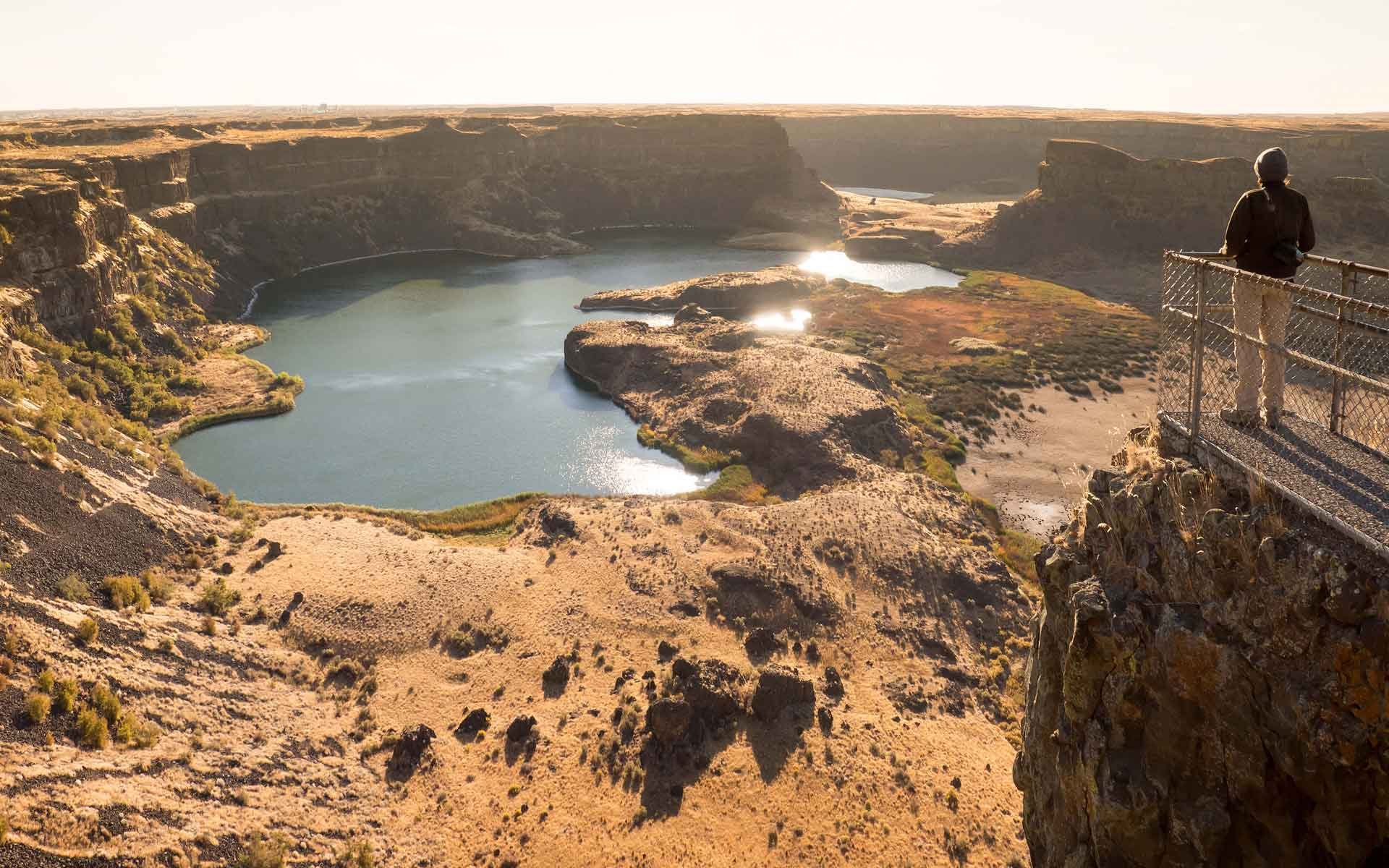
Dry Falls: The Waterfall That Went Dry
Dry Falls: The Waterfall That Went Dry
Written by: Keya Gambhir
Have you ever seen a waterfall? They’re fun to watch, with water rushing down rocks, making a splash! But Dry Falls in Washington State is super special because it’s one of the biggest waterfalls that ever existed, and now, it’s completely dry!
What Is Dry Falls?
Dry Falls is a giant cliff that’s about 3.5 miles wide. That’s really, really big! The cliff drops down 400 feet, that’s taller than a 40-story building! To help you imagine, Niagara Falls, one of the most famous waterfalls in the world, is only 1 mile wide and 165 feet tall. Dry Falls is much bigger!
Even though it’s called Dry Falls, it doesn’t have water flowing over it anymore. It’s like a huge waterfall frozen in time, showing us what happened long ago.
How Was Dry Falls Made?
A long, long time ago, thousands of years before you and I were born, the Earth was very different. Much of North America was covered with giant ice sheets called glaciers. In Montana, a huge ice dam blocked a massive lake called Glacier Lake Missoula. This lake was huge, covering 3,000 square miles, about the size of Lake Ontario!
One day, the ice dam broke! Imagine a giant wall of water rushing out all at once. This flood, called the Missoula Flood, raced across states like Idaho, Washington, and Oregon. It was so powerful that it flooded areas, even covering what is now the city of Portland under 400 feet of water!
When this flood reached Dry Falls, it carved out the land, creating a waterfall much bigger than any waterfall today. The rushing water was so strong it swept away rocks and soil, making the cliffs and the huge drop we see now.
The waterfall wasn’t always where it is today. It actually started 15 miles south near a place called Soap Lake and slowly moved back to where it is now. This process is called “headward erosion,” which means the waterfall moved backward over time because of the flowing water.
Dry Falls sits on what used to be an old path of the Columbia River. Long ago, glaciers blocked the river and forced it to flow a different way, past Dry Falls. When the ice melted and moved away, the river found its current path, leaving Dry Falls dry.
Visiting Dry Falls Today
Today, Dry Falls is dry, but it’s still amazing to see. You can visit Sun Lakes-Dry Falls State Park near Coulee City, Washington. There’s a Visitor Center where you can learn more about the Ice Age floods and the huge power of nature that created this incredible place.
You can hike along the cliffs, enjoy the beautiful views, and imagine the giant waterfall that once roared here. It’s a great place to explore and think about how Earth changes over time.
Why Is Dry Falls Important?
Dry Falls helps us understand Earth’s history. It reminds us how powerful nature can be. Even though the waterfall doesn’t have water now, it tells a story about floods, ice ages, and rivers changing course.
So next time you see a waterfall, remember Dry Falls, the giant waterfall that went dry but still shows us the amazing forces that shape our world!
References
Grant County Tourism. 2024. "Dry Falls." Grant County, Washington. Accessed July 7, 2025. https://www.grantcountywa.gov/1452/Dry-Falls.
National Park Service. n.d. “Sun Lakes-Dry Falls State Park.” Accessed July 7, 2025. https://www.nps.gov/places/sun-lakes-dry-falls-state-park.htm.
Wikipedia contributors. 2024. “Dry Falls.” Wikipedia, The Free Encyclopedia. Last modified 2024. Accessed July 7, 2025. https://en.wikipedia.org/wiki/Dry_Falls.
International Union of Geological Sciences. 2024. “Dry Falls and the Channeled Scabland.” Geoheritage. Accessed July 7, 2025. https://iugs-geoheritage.org/geoheritage_sites/dry-falls-and-the-channeled-scabland/.
Washington State Parks and Recreation Commission. n.d. “Dry Falls Visitor Center.” Accessed July 7, 2025. https://parks.wa.gov/dry-falls-visitor-center.
